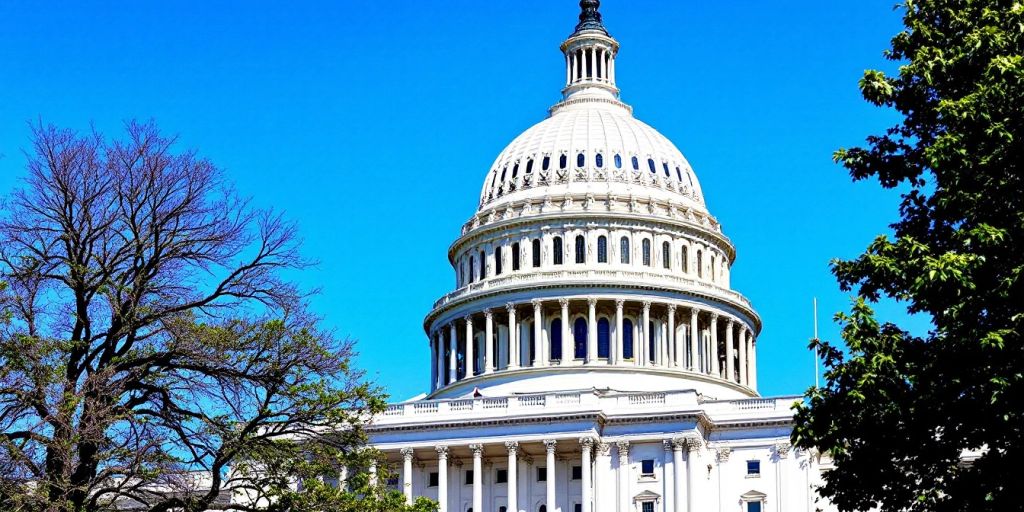
This article aims to break down the complex structure and functions of the U.S. government. By exploring its history, branches, and how it affects citizens, we hope to make it easier to understand how federal governance works. Whether you’re curious about how laws are made or how your rights are protected, this guide covers it all.
Key Takeaways
- The U.S. government is built on a strong foundation from history and the Constitution.
- There are three main branches: Legislative, Executive, and Judicial, each with its own powers.
- Federal agencies play a vital role in managing government tasks and ensuring accountability.
- Federalism balances power between national and state governments, affecting how laws are applied.
- Citizens have a voice in federal governance through voting, rights, and participation in public services.
The Foundation of Federal Governance

Historical Context and Constitutional Basis
The foundation of federal governance in the United States is rooted in its history and the Constitution. After the American Revolution, the need for a stronger central government became clear. The Articles of Confederation proved weak, leading to the Constitutional Convention of 1787. The resulting Constitution established a framework for federal governance, balancing power between the national and state governments. This balance is crucial for maintaining order and liberty.
The Role of the Founding Fathers
The Founding Fathers played a vital role in shaping the U.S. government. Key figures like George Washington, Thomas Jefferson, and James Madison contributed to the creation of the Constitution. Their ideas about democracy, rights, and governance continue to influence the nation today.
- George Washington: First President and a unifying leader.
- Thomas Jefferson: Advocate for individual rights and author of the Declaration of Independence.
- James Madison: Known as the "Father of the Constitution" for his pivotal role in its drafting.
The Federalist Papers and Their Influence
The Federalist Papers, written by Alexander Hamilton, James Madison, and John Jay, were essential in promoting the ratification of the Constitution. These essays explained the need for a strong federal government and addressed concerns about potential abuses of power.
The structure of the government must furnish the proper checks and balances between the different departments.
These writings remain a key reference for understanding the principles of American governance and the importance of a balanced system.
Overall, the foundation of federal governance is a complex interplay of historical events, influential figures, and foundational documents that continue to shape the United States today.
The Three Branches of Government
The U.S. government is divided into three main parts, known as branches. This division helps to ensure that no single part becomes too powerful. Each branch has its own responsibilities and powers, which work together to govern the country effectively.
The Legislative Branch: Congress
The legislative branch, called Congress, is responsible for making laws. It has two parts:
- The House of Representatives: Members are elected to represent the people.
- The Senate: Each state has two senators who represent their state.
Together, they create and pass laws that affect everyone in the country.
The Executive Branch: The Presidency
The executive branch is led by the President, who is responsible for enforcing laws. The President also:
- Acts as the Commander-in-Chief of the military.
- Appoints federal officials, including judges.
- Conducts foreign policy and represents the U.S. to other countries.
The Judicial Branch: The Supreme Court
The judicial branch interprets laws and ensures they are applied fairly. The Supreme Court is the highest court in the land and has the power to:
- Review laws to see if they follow the Constitution.
- Decide cases that involve federal laws.
- Resolve disputes between states.
The Constitution of the United States divides the federal government into three branches: legislative, executive, and judicial. This structure is designed to maintain a balance of power and protect citizens’ rights.
Each branch plays a crucial role in the functioning of the government, ensuring that the rights of the people are upheld and that power is not concentrated in one area.
The Role of Federal Agencies
Federal agencies play a crucial role in how the government operates. They are part of the executive branch and help carry out and enforce laws. Here’s a closer look at their functions and responsibilities:
Functions and Responsibilities
- Implementing laws: Agencies ensure that laws passed by Congress are put into action.
- Regulating industries: They create rules for businesses to follow, ensuring safety and fairness.
- Providing services: Many agencies offer services directly to the public, like health care or education.
Key Federal Agencies and Their Impact
Here are some important federal agencies and what they do:
| Agency | Main Function |
|---|---|
| Environmental Protection Agency (EPA) | Protects the environment and public health. |
| Federal Bureau of Investigation (FBI) | Investigates and prevents federal crimes. |
| Social Security Administration (SSA) | Manages social security benefits for citizens. |
Oversight and Accountability
To ensure that federal agencies work properly, there are systems in place for oversight:
- Congressional oversight: Congress monitors agencies to make sure they follow laws.
- Public accountability: Citizens can voice concerns about agency actions.
- Internal audits: Agencies regularly check their own work to ensure efficiency and compliance.
Federal agencies are essential for the smooth functioning of the government, helping to enforce laws and provide services to the public.
In summary, federal agencies are vital components of the U.S. government, ensuring that laws are enforced and services are delivered effectively. They help maintain order and provide necessary support to citizens.
Federalism and State Relations
The Balance of Power
Federalism is the system that divides power between the national and state governments. This balance is important because it helps prevent any one level of government from becoming too powerful. Each state has its own laws and government, which allows for local control.
Interstate Relations and Cooperation
States often need to work together to solve problems. Here are some ways they cooperate:
- Sharing resources: States can help each other during emergencies, like natural disasters.
- Interstate agreements: States can make deals to manage shared resources, like rivers.
- Legal cooperation: States often work together on legal matters, such as extraditing criminals.
Federal and State Government Conflicts
Sometimes, the national and state governments disagree. This can lead to conflicts, such as:
- Laws that clash: A state might pass a law that goes against federal law.
- Funding issues: States may not get the money they need from the federal government.
- Policy differences: States may have different views on issues like education or healthcare.
Federalism allows for diversity in governance, letting states tailor their laws to fit their unique needs and cultures.
The Electoral System and Federal Governance
The Electoral College Explained
The Electoral College is a unique system used to elect the President and Vice President of the United States. It consists of 538 electors, and a candidate needs a majority of 270 electoral votes to win. Each state has a certain number of electors based on its population, which means larger states have more influence in the election process.
Federal Elections and Their Significance
Federal elections are crucial for democracy in the U.S. They allow citizens to choose their leaders and influence government policies. Here are some key points about federal elections:
- They occur every four years for the presidency.
- Congressional elections happen every two years.
- Voter turnout can greatly affect the outcome of elections.
The Role of Political Parties in Federal Governance
Political parties play a significant role in shaping federal governance. They help organize elections and influence policy decisions. Here are some important functions of political parties:
- Candidate Selection: Parties choose candidates to run for office.
- Voter Mobilization: They encourage people to vote and participate in the political process.
- Policy Development: Parties create platforms that outline their positions on various issues.
The electoral system is a vital part of how citizens engage with their government, ensuring that their voices are heard in the decision-making process.
The Budget and Fiscal Policy
Federal Budget Process
The federal budget process is how the government plans its spending and revenue. It involves several steps:
- Proposal: The President submits a budget proposal to Congress.
- Review: Congress reviews and makes changes to the proposal.
- Approval: Both houses of Congress must approve the budget before it becomes law.
Taxation and Revenue
Taxes are a major source of revenue for the federal government. They help fund various programs and services. Here are some key types of taxes:
- Income Tax: Tax on individual earnings.
- Corporate Tax: Tax on company profits.
- Sales Tax: Tax on goods and services sold.
Government Spending and Debt
Government spending is how the federal government uses its money. It can lead to debt if spending exceeds revenue. Here’s a simple breakdown of spending categories:
| Category | Percentage of Budget |
|---|---|
| Social Security | 24% |
| Defense | 15% |
| Medicare | 14% |
| Other Programs | 47% |
The budget is crucial for ensuring that the government can provide services to its citizens. Understanding how to balance the budget is essential for a healthy economy.
In summary, the federal budget process, taxation, and spending are interconnected. They determine how the government operates and impacts citizens’ lives.
Checks and Balances in Federal Governance

Separation of Powers
The U.S. government is divided into three branches: the Legislative, Executive, and Judicial. Each branch has its own powers and responsibilities, ensuring that no single branch becomes too powerful. This division is crucial for maintaining a fair government.
Mechanisms of Accountability
To keep each branch in check, several mechanisms are in place:
- Legislative Oversight: Congress can investigate and oversee the actions of the Executive branch.
- Judicial Review: The Supreme Court can declare laws or actions unconstitutional.
- Veto Power: The President can veto legislation passed by Congress, but Congress can override this veto with a two-thirds majority.
Case Studies of Checks and Balances in Action
Here are some examples of how checks and balances work:
- Senate Confirmation: The Senate must approve presidential appointments, ensuring that the Executive branch does not appoint unqualified individuals.
- Impeachment: Congress has the power to impeach a president, which acts as a check on presidential power.
- Judicial Decisions: Supreme Court rulings can limit the powers of Congress and the President, maintaining balance.
The system of checks and balances is designed to prevent any one branch from gaining too much power, promoting fairness and justice in governance.
In summary, the checks and balances system is essential for a healthy democracy, allowing each branch to monitor and limit the others’ powers. This structure helps protect citizens’ rights and ensures that government actions are fair and just.
The Impact of Federal Governance on Citizens
Civil Rights and Liberties
Federal governance plays a crucial role in protecting civil rights and liberties for all citizens. This includes:
- Freedom of speech
- Right to vote
- Protection against discrimination
These rights ensure that every individual can participate in democracy and express their opinions freely.
Public Services and Welfare
The federal government provides essential services that impact daily life. Some key services include:
- Education funding
- Healthcare programs like Medicare and Medicaid
- Social Security benefits
These programs help support citizens, especially those in need, ensuring a basic standard of living.
Citizen Participation in Federal Governance
In a democracy, citizens have the power to influence government decisions. Voting is one of the most important ways to affect change. Other ways include:
- Attending town hall meetings
- Contacting elected officials
- Participating in advocacy groups
Engaging in the democratic process is vital for ensuring that government reflects the will of the people.
Overall, federal governance significantly impacts citizens by safeguarding their rights, providing essential services, and encouraging active participation in democracy. Understanding these elements helps citizens navigate their roles and responsibilities within the government.
Conclusion
In summary, understanding how the U.S. government works is important for everyone. The federal system is made up of three main branches: the Legislative, the Executive, and the Judicial. Each branch has its own job and powers, which helps keep things fair and balanced. Knowing how these branches interact can help us see how laws are made and how our rights are protected. By learning about our government, we can be better citizens and make informed choices. Remember, being involved in our democracy is key to shaping the future.
Frequently Asked Questions
What is federal governance?
Federal governance is a system where power is shared between a national government and smaller state governments. This means both levels have their own responsibilities and can make their own laws.
Why do we have three branches of government?
The three branches—Legislative, Executive, and Judicial—help prevent any one branch from becoming too powerful. Each branch has its own duties, which keeps things fair and balanced.
How do federal agencies work?
Federal agencies are groups that help carry out the laws made by Congress. They handle specific tasks like health, safety, and education, making sure the laws are followed.
What is federalism?
Federalism is the way that power is divided between the national government and the states. It allows states to make their own rules while still being part of the larger country.
How does the electoral system function?
The electoral system is how we choose our leaders. For example, the Electoral College helps decide who becomes president based on votes from each state.
What is the purpose of checks and balances?
Checks and balances are rules that make sure no one branch of government gets too much power. Each branch can check the others, which helps keep everything in order.


